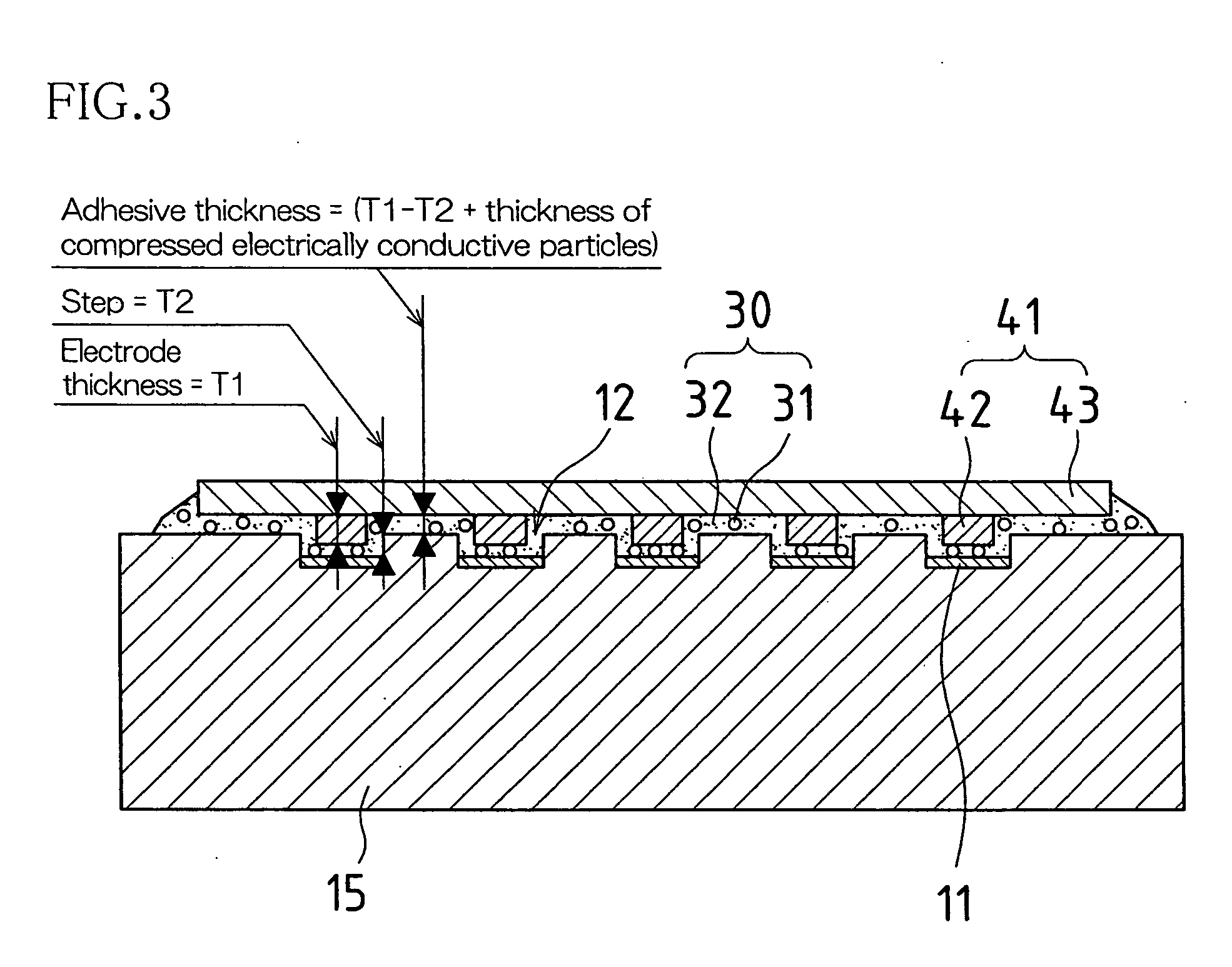Circuit board electrode connection structure
- Summary
- Abstract
- Description
- Claims
- Application Information
AI Technical Summary
Benefits of technology
Problems solved by technology
Method used
Image
Examples
embodiment 1
[0045] Below, a first embodiment of the present invention is described with reference to the drawings.
[0046]FIG. 1 is a sectional view showing a circuit board electrode connection structure associated with the first embodiment of the present invention as seen in plan view; FIG. 2 is a cross-sectional view of section A-A in FIG. 1; and FIG. 3 is a cross-sectional view of section B-B in FIG. 1.
[0047] In the present first embodiment, an inkjet head employing anisotropic electrically conductive adhesive is used as example of an object being bonded; and a flexible wiring board (here, a TCP; i.e., tape carrier package) is used as an example of a circuit board.
[0048] As shown in FIGS. 1 through 3, electrode connection structure(s) at inkjet head(s) 10 is / are such that outer lead(s) 42 is / are formed on TCP(s) 41 on which inkjet head drive IC(s) 40 is / are mounted; the structure being such that electrical and mechanical connection to external circuitry connection electrode(s) 11 of inkjet ...
embodiment 2
[0061] Next, a second embodiment of the circuit board electrode connection structure of the present invention is described with reference to the drawings.
[0062]FIG. 7 is a sectional view showing a circuit board electrode connection structure associated with the second embodiment of the present invention.
[0063] At the present second embodiment, a circuit board electrode connection structure in which adhesive is used to connect two circuit boards is described. A glass epoxy wiring board is used as one of the circuit boards, and a flexible wiring board is used as the other of the circuit boards.
[0064] Glass epoxy wiring board 70 is made up of glass epoxy substrate 71 and electrode(s) 72. Electrode 72 is such that Ni and Au plating is applied over ½ oz. copper foil wiring (thickness 18μ) formed over glass epoxy board substrate 71, this protruding from glass epoxy substrate 71 to a thickness (T5) of approximately 20μ.
[0065] On the other hand, flexible wiring board 80 is made up of po...
PUM
 Login to View More
Login to View More Abstract
Description
Claims
Application Information
 Login to View More
Login to View More - R&D
- Intellectual Property
- Life Sciences
- Materials
- Tech Scout
- Unparalleled Data Quality
- Higher Quality Content
- 60% Fewer Hallucinations
Browse by: Latest US Patents, China's latest patents, Technical Efficacy Thesaurus, Application Domain, Technology Topic, Popular Technical Reports.
© 2025 PatSnap. All rights reserved.Legal|Privacy policy|Modern Slavery Act Transparency Statement|Sitemap|About US| Contact US: help@patsnap.com



